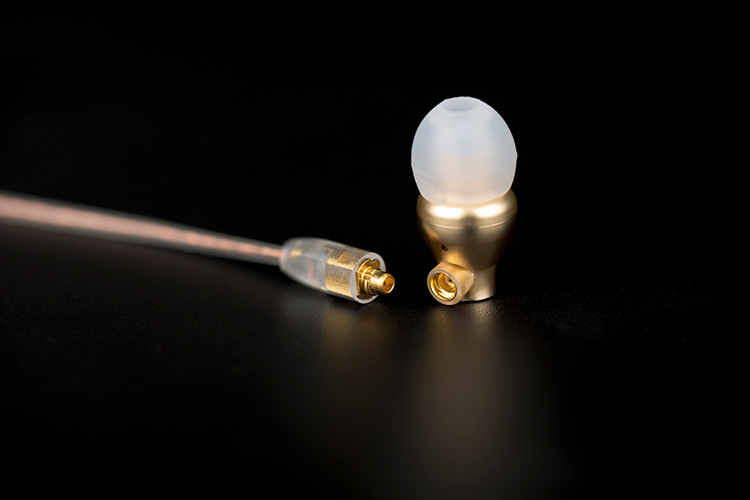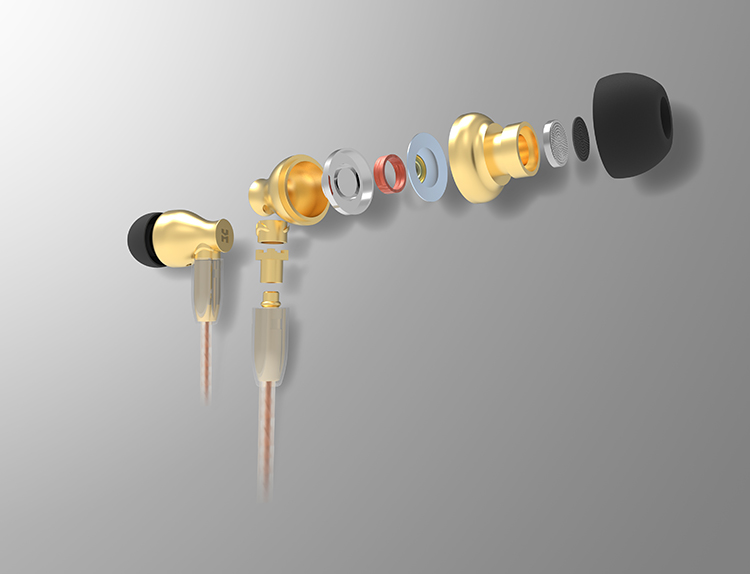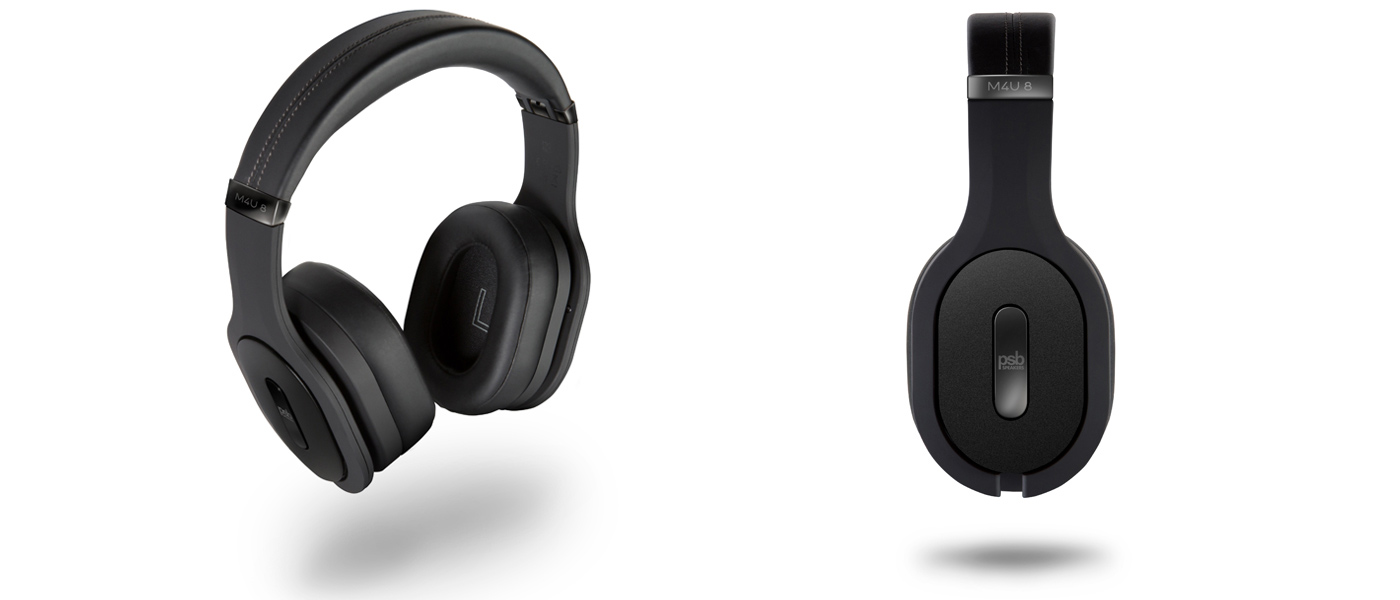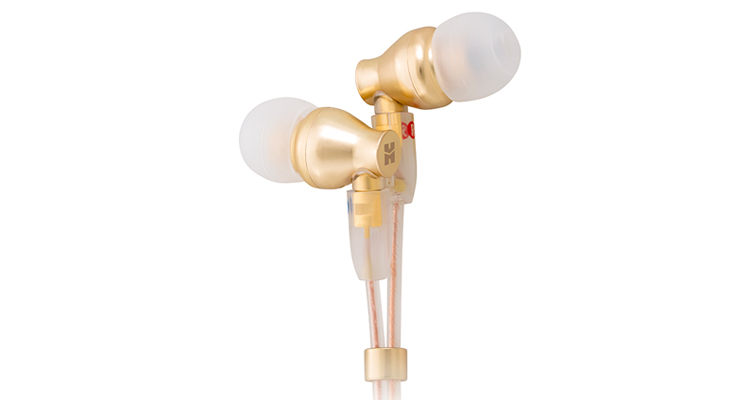These carefully engineered driver diaphragms based on founder Dr. Fang Bian’s Ph.D. work in materials science, promise to deliver multi-driver IEM bass response and high end extension but with the laser sharp integration and focus of a single driver design. Let me tell you, the RE-800 delivers on this promise. They really do combine the super detail retrieval of a single driver IEM, but with fantastic bass response and high end extension.
HIFIMAN RE-800 in Ear Monitors
- Incredible focus, detail and resolution.
- Fantastic bass performance from an IEM: tight, deep and well integrated.
- Excellent build quality: they feel expensive.
- New MMCX connectors allow easy cable replacement and upgrades, a major improvement over previous HIFIMAN IEMs.
HIFIMAN has become one of the most well regarded makers of headphones around. Their products, designed by Dr. Fang Bian, are sold both manufacturer direct and by resellers around the world. Unlike many high end IEMs, HIFIMAN products all use single drivers rather than multiple drivers. Their “topology diaphragm” technology allows them to engineer a single driver with the wideband performance of multiple drivers while retaining the detail and clarity you can only get from a crossover free single driver design. The RE-800 is a new product for 2017, near the top of the line. The only higher up models are the new $2000 universal fit RE-2000 and the custom fit RE-1000 first introduced in 2015.
Frequency Response:
5 Hz-20kHz, +/- 3dB
Impedance:
60 Ohms
Sensitivity:
105 dB/mW
weight:
27g each
Dimensions:
10.5 x 16.6 x 21.25 mm (0.41″ x 0.65″ x 0.84″ )
Included eartips:
(1) Pair Foam Tips (large, black)
(1) Pair Foam Tips (medium, black)
(1) Pair Tri-flange (large, black)
(1) Pair Tri-flange (large, clear)
(1) Pair Tri-flange (medium, black)
(1) Pair Tri-flange (medium, clear)
(1) Pair Tri-flange (small, black)
(1) Pair Tri-flange (small, clear)
(1) Pair Bi-flange (medium, clear)
(1) Pair Bi-flange (small, black)
(1) Pair Single-flange (large, clear)
(1) Pair Single-flange (medium, clear)
(1) Pair Single-flange (small, clear)
(1) Pair Single-flange bump (medium, black)
MSRP:
$699
Company:
SECRETS Tags:
Headphones, IEM, HIFIMAN, HIFIMAN Headphones, HIFIMAN Earphones, HIFIMAN Sound, In Ear Monitors Review 2018
Secrets Sponsor
The RE-800s are rather different than most of today’s high end IEMs in that they are single driver designs. Back when Etymotic introduced the ER-4 almost 20 years ago, they used a single driver to deliver some incredible detail and focus. But this came at a cost of relatively low impact, light weight bass and rolled off extension in the high frequency regime. To remedy this, many designers started using multiple drivers in their IEMs, with as many as 5 drivers, to provide excellent frequency extension. With the RE-800 (and the new, even more expensive RE-2000), HIFIMAN tackles the frequency extension problem in a completely new way: their “topology” diaphragm. By using a combination of carefully designed diaphragm geometry and a proprietary coating technology that can vary the thickness and pattern of a nanoparticle coating on the diaphragm surface, Dr. Bian can engineer a driver that works better over a wider frequency range. The idea is to get the focus, clarity and detail resolution of a single driver, with no crossover or any other complications, while gaining the frequency extension of a multi driver design.

The side effect of this design is that the RE-800 is very compact. It looks from afar like a typical, low rent IEM. But up close, it’s clear this is a high end product. The body is machined out of solid brass, with thick matte finish gold plating applied on top. They are heavy for their size with a beautiful finish. A big selection of eartips is included in the very nice wooden box that should help most people get a good fit. One big change is the cable setup. When the RE-800 was first released in mid-2017, people had problems with the non-detachable cable setup that HIFIMAN typically uses in their less expensive IEMs. Maybe it was the increased weight of the RE-800, but cable failure at the headphone was an issue, and required the heaphones to be sent back to HIFIMAN for repair. A running change was made to include the industry standard MMCX connector at the heaphone for user replacable cable replacement. This also has the side effect of allowing users to choose aftermarket cables. The MMCX connector was originally designed for microwave electronics, with frequency extension to 6 GHz, 5 orders of magnitude higher than what is needed audio signals. But they work well and are widely used with other headphones even if they are overkill, plus they will come loose if the cable is snagged, protecting the hardware.

My only issue with the design was getting a good fit. None of the provided eartips gave me a perfect fit. I like my IEMs to seal completely and tightly in the ear canal, providing lots of ambient noise isolation. All the eartips provided with the RE-800s were too wide at the tip and too narrow at the back to give me a good seal. But of course this is different for every person. I’d probably end up investing in custom molded eartips. But of course every listener will have to try them out to be sure. A side effect of the fit issue and the weight of the RE-800s is that they didn’t want to stay put when moving around. If the fit was tighter in the ear canal, I bet this would not be an issue.
In preparation for listening, I hooked them up to my Schiit Asgard 2 amplifier at work and let music play at a loud level sitting on the desk for a full weekend. The Asgard 2 was paired with a Bifrost Uber DAC and the soon to be reviewed Prism Sound Callia DAC all fed by a computer running JRiver Media Center 21 with an ASUS Xonar Essence STX sound card as the SPDIF interface.
My first IEMs were Etymotic ER-4S that I bought over 15 years ago. I’ve always loved them. Many reviewers said, and I agree, that listening to them was like having the interconnects soldered directly to your brain. They did have disadvantages, including pretty lightweight bass and rolled off highs, but the focus, detail and immediacy they delivered was fantastic. Several years ago I upgraded to Shure SE-425s, which have much better bass but give up something on the focus and detail. From the first instant I listened to the RE-800s, I knew they were the best of both worlds and more. I immediately noticed two “smack you in the face” properties of the RE-800. Their detail retrieval, focus and resolution were unmatched in my experience. For any headphone at any price. Part of this is the ambient sound reduction of an IEM over an open backed headphone like a Sennheiser HD-800. I also immediately noticed the bass. There was plenty of it, the bass went deep, and it was perfectly integrated with the mids and highs without sounding detached, bloated or slow. On one of my favorite acoustic albums. Emiliana Torrini’s Fisherman’s Woman, you could feel the texture of the guitar strings and every little nuance of Torrini’s voice in a way I’ve seldom heard.

Another detail I heard here was extension on sibilants. With my old Etymotics, the top few kHz was rolled off because of the single driver design. No such problem with the RE-800s. I was very quickly convinced that the topology diaphragm technology of HIFIMAN really does work. The RE-800 delivers full 20 Hz to 20 kHz response with no lightweight bass or rolled off highs, AND delivers the laser sharp focus of a single driver IEM.

When I heard the improved bass, I went to my favorite bass torture album, Crystal Method’s Vegas. All the extension and power I expected was there. Of course, IEMs do not allow the sound waves to hit the outsides of your ear, so you do lose a little potential tactile impact. But as far as the extension and slam went, I’ve not heard better with any IEM. Compared to my Shures the bass had more extension, more impact and quite a lot more detail.
That improvement in detail was across the board, but I did not expect that improvement to go all the way into the bass. And that’s not to say the SE-425s are bad. I think they’re great. But it’s very apparent you’re missing detail and resolution with them compared to the RE-800s.
Detail is a double edged sword, though. The 24 bit 192 kHz remastering of David Bowie’s 1969 David Bowie / Space Oddity revealed all the limitations of the original recording in dynamics and tape hiss. But I still preferred hearing everything with exceptional detail, warts and all.

In all my listening, I came up with only one complaint about the RE-800s. None of the eartips fit me all that well. As I said earlier, they all were too wide at the tip and too slim at the end facing the headphone to seal perfectly in my ear canal. This compromised the ambient sound reduction level, and caused them to fall out relatively easily compared to other IEMs I have. At my desk at work this was not a big deal, but when traveling it did cause problems.
Secrets Sponsor
I tried the included Comply foam tips as well. They worked the best, but still did not provide the sound isolation of the fully sealed triple flange rubber eartip I prefer. They worked well with my Oppo HA-2 headphone amp, but the relative lack of sound isolation on the plane did detract from their performance. This fit issue is a very personal thing, though. They might fit you perfectly, but I wasn’t able to find the tight seal I wanted with any of the provided tips. If I had RE-800s myself, I would definitely consider investing in custom molded eartips from an audiologist.
Compared to other top shelf IEMs, the RE-800s are moderately priced. You can spend plenty more money on IEMs if you want. But you’d be hard pressed to do better than the RE-800s ability to present detail and resolution and give you a fully integrated timbre throughout the full frequency spectrum.
- Fantastic detail retrieval and focus AND great bass and high end extension
- Beautifully made
- New, user replaceable cables are a big upgrade
- Moderately priced compared to competing super-high end IEMs.
- Eartips that fit me better personally
- Lighter weight so they are less likely to fall out
The RE-800s are fantastic IEMs that deliver on their promise to give you the detail, resolution and integrated sound only a crossoverless single driver design can deliver, and provide full frequency extension from the bottom octave all the way to 20 kHz. They’re beautifully made, sound wonderful and are competitively priced compared to other high end, top of the line IEMs. I strongly recommend that you give them a listen if you’re in the market for a top shelf pair of IEMs. Yes, I had an issue with the fit, but that could be the case with any IEM for any listener. As usual, you really do need to listen to them with your own ears, here quite literally, to be sure they are for you.




